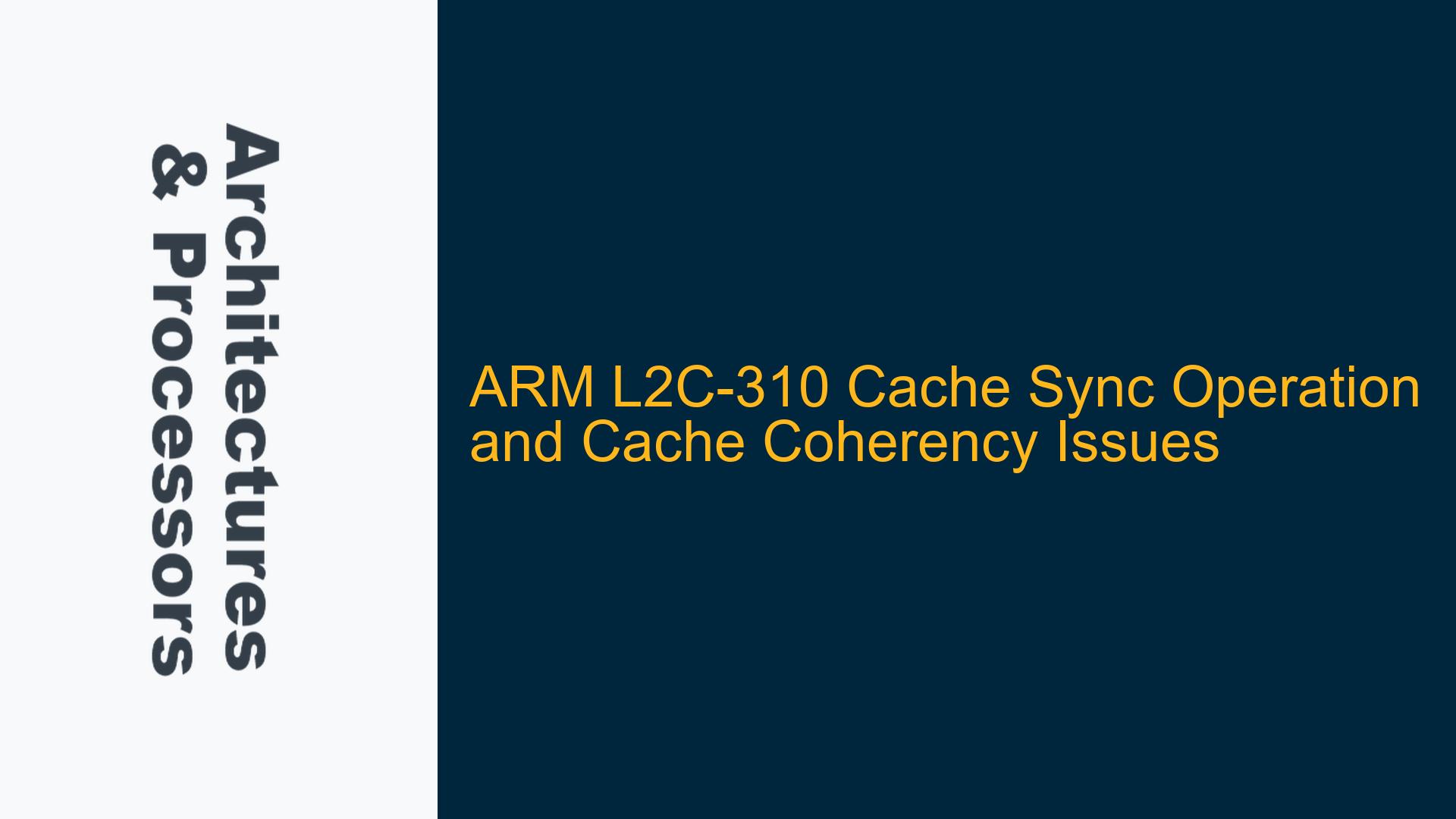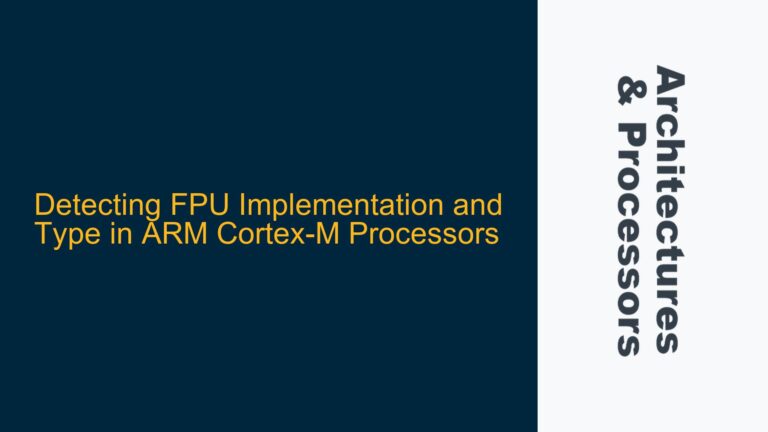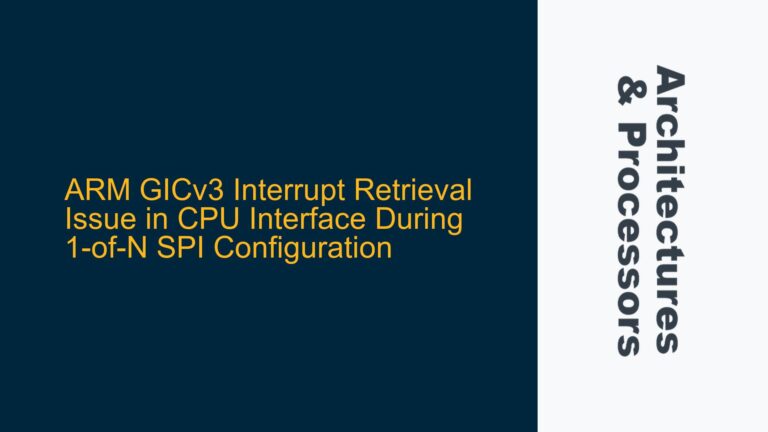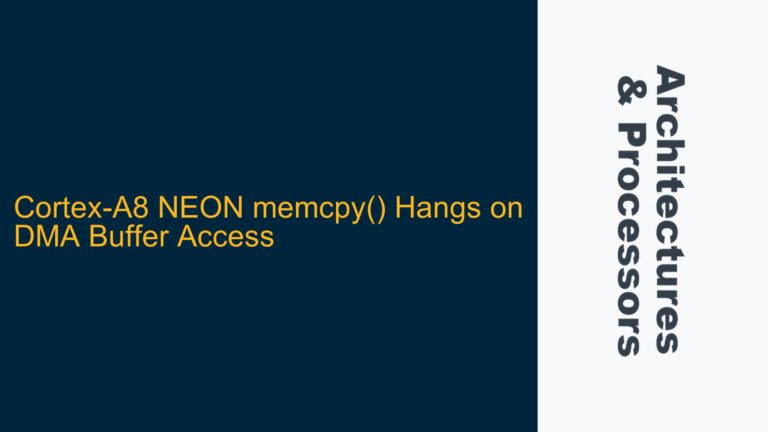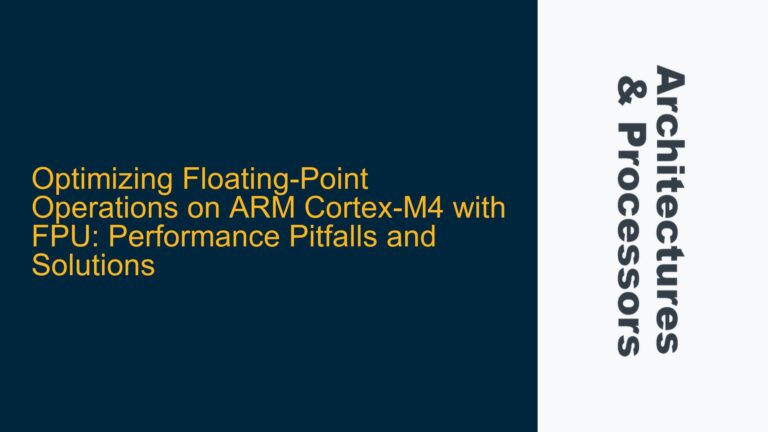ARM Cortex-A Series Cache Coherency During L2 Cache Maintenance Operations
The ARM L2C-310 cache controller is a critical component in ARM Cortex-A series processors, responsible for managing the Level 2 (L2) cache. One of the key operations in the L2C-310 is the Cache Sync operation, which ensures that all pending cache maintenance operations are completed before proceeding further. This operation is particularly important in scenarios where cache coherency must be maintained, such as during Direct Memory Access (DMA) transfers or when transitioning between different power states.
The Cache Sync operation is initiated by writing to the CACHE_SYNC register (offset 0x730 in the L2C-310 register space). This operation ensures that all previously issued cache maintenance operations, such as cache invalidations or clean operations, are completed before the processor continues execution. However, improper use of the Cache Sync operation can lead to subtle hardware-software interaction issues, particularly when combined with other cache maintenance operations or when transitioning between different cache states.
In the provided code snippet, the Xil_L2CacheFlush function is used to flush the L2 cache. This function disables write-back and line fills, performs a cache invalidation, waits for the invalidation to complete, and then issues a Cache Sync operation before re-enabling write-back and line fills. The Xil_L2CacheSync function is a simple wrapper that writes to the CACHE_SYNC register to initiate the sync operation.
The primary issue here is understanding the exact sequence of operations required to ensure cache coherency and the role of the Cache Sync operation in this sequence. Misunderstanding or misusing the Cache Sync operation can lead to data corruption, particularly in multi-core systems or systems with DMA engines that access memory independently of the CPU.
Cache Sync Operation Timing and Memory Barrier Omission
One of the most common causes of cache coherency issues in ARM systems is the improper timing of cache maintenance operations, particularly the Cache Sync operation. The Cache Sync operation must be issued at the correct point in the sequence of cache maintenance operations to ensure that all pending operations are completed before the processor continues execution. If the Cache Sync operation is issued too early or too late, it can lead to data corruption or inconsistent cache states.
Another common cause of cache coherency issues is the omission of memory barriers. Memory barriers are used to ensure that memory operations are completed in the correct order. In the provided code snippet, a Data Synchronization Barrier (DSB) is used after re-enabling write-back and line fills to ensure that all memory operations are completed before the processor continues execution. However, the placement of this barrier is critical. If the barrier is placed incorrectly, it can lead to memory operations being reordered, which can cause data corruption.
The Xil_L2CacheFlush function disables write-back and line fills before performing a cache invalidation. This is done to ensure that no new data is written to the cache during the invalidation process. However, disabling write-back and line fills can also have unintended side effects, particularly if the cache is being accessed by other cores or DMA engines. If the cache is disabled for too long, it can lead to performance bottlenecks or data corruption.
The Xil_L2CacheSync function is used to ensure that all pending cache maintenance operations are completed before the cache is re-enabled. However, the timing of this operation is critical. If the Cache Sync operation is issued too early, it may not wait for all pending operations to complete. If it is issued too late, it may not be effective in ensuring cache coherency.
Implementing Cache Sync with Proper Memory Barriers and Cache State Management
To ensure proper cache coherency and avoid data corruption, the Cache Sync operation must be implemented with careful attention to timing and memory barriers. The following steps outline the correct sequence of operations for flushing the L2 cache using the L2C-310 cache controller:
First, disable write-back and line fills by writing to the DEBUG_CTRL register (offset 0x724 in the L2C-310 register space). This ensures that no new data is written to the cache during the invalidation process. The value 0x3 is written to disable both write-back and line fills.
Next, perform a cache invalidation by writing to the CACHE_INV_CLN_WAY register (offset 0x77C). This operation invalidates all cache lines in the specified ways. The value 0x0000FFFF is written to invalidate all ways in the cache. After issuing the invalidation, poll the CACHE_INV_CLN_WAY register to ensure that the invalidation operation has completed. The invalidation is complete when the value read from the register is 0x00000000.
Once the invalidation is complete, issue a Cache Sync operation by writing to the CACHE_SYNC register (offset 0x730). This ensures that all pending cache maintenance operations are completed before the cache is re-enabled. The value 0x0 is written to initiate the sync operation.
After the Cache Sync operation is complete, re-enable write-back and line fills by writing to the DEBUG_CTRL register. The value 0x0 is written to re-enable both write-back and line fills.
Finally, issue a Data Synchronization Barrier (DSB) to ensure that all memory operations are completed before the processor continues execution. This is critical to ensure that no memory operations are reordered, which could lead to data corruption.
The following table summarizes the register offsets and values used in the cache flush operation:
| Register Name | Offset | Value | Description |
|---|---|---|---|
DEBUG_CTRL |
0x724 |
0x3 |
Disable write-back and line fills |
CACHE_INV_CLN_WAY |
0x77C |
0x0000FFFF |
Invalidate all cache lines in all ways |
CACHE_SYNC |
0x730 |
0x0 |
Initiate Cache Sync operation |
DEBUG_CTRL |
0x724 |
0x0 |
Re-enable write-back and line fills |
| DSB | N/A | N/A | Data Synchronization Barrier to ensure memory operations are completed |
By following this sequence of operations, you can ensure that the L2 cache is properly flushed and that cache coherency is maintained. This is particularly important in multi-core systems or systems with DMA engines that access memory independently of the CPU.
In addition to the sequence of operations, it is also important to consider the timing of the Cache Sync operation. The Cache Sync operation should be issued immediately after the cache invalidation operation to ensure that all pending operations are completed before the cache is re-enabled. If the Cache Sync operation is delayed, it may not be effective in ensuring cache coherency.
Finally, it is important to use memory barriers correctly to ensure that memory operations are completed in the correct order. The Data Synchronization Barrier (DSB) should be issued after re-enabling write-back and line fills to ensure that all memory operations are completed before the processor continues execution. This is critical to avoid data corruption caused by reordered memory operations.
In conclusion, the Cache Sync operation is a critical component of cache maintenance in ARM Cortex-A series processors. By following the correct sequence of operations and using memory barriers correctly, you can ensure that cache coherency is maintained and avoid data corruption in your system.
